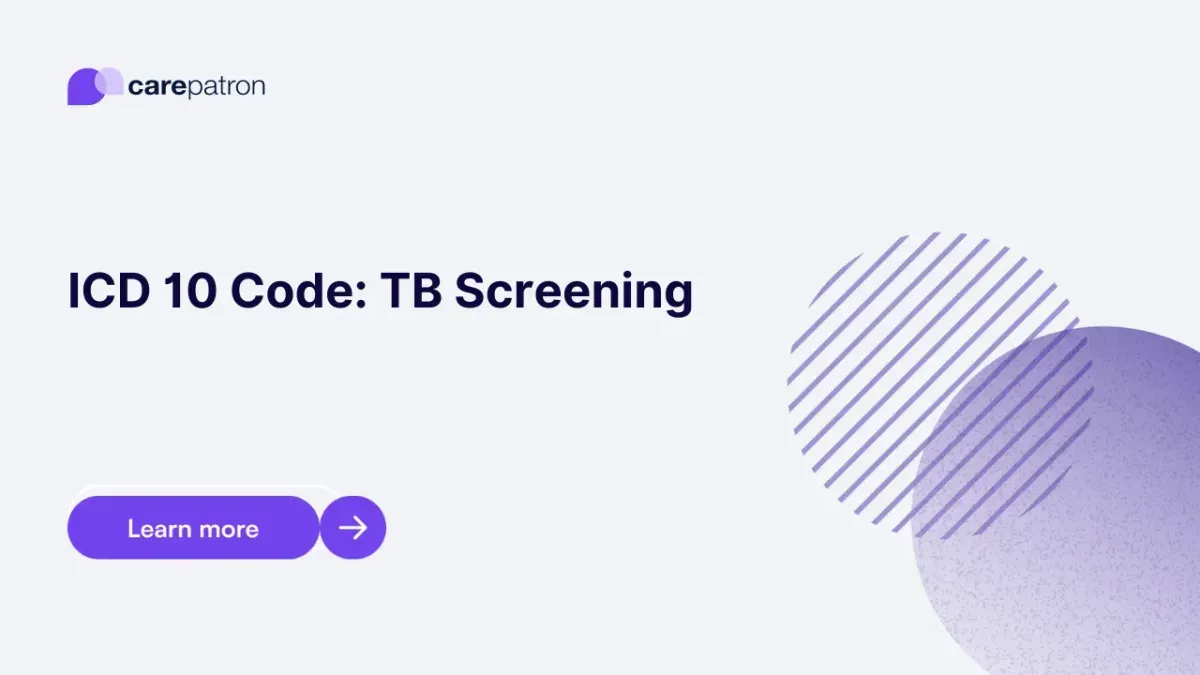
TB Screening ICD-10-CM Codes | 2025
Learn more about the ICD-10 codes used for TB screening, their billability, synonyms, and FAQ answers through this guide.
Use Code
Commonly asked questions
Healthcare practitioners can use a TB screening ICD code once a principal diagnosis has been established and testing has been conducted based on the patient’s interview, medical history, or symptoms.
Yes, all TB screening ICD-10 codes mentioned in this guide are billable.
This means that the healthcare practitioner has conducted the test and has all pre-requisite conditions like a principal diagnosis.
EHR and practice management software
Get started for free
*No credit card required
Free
$0/usd
Unlimited clients
Telehealth
1GB of storage
Client portal text
Automated billing and online payments
